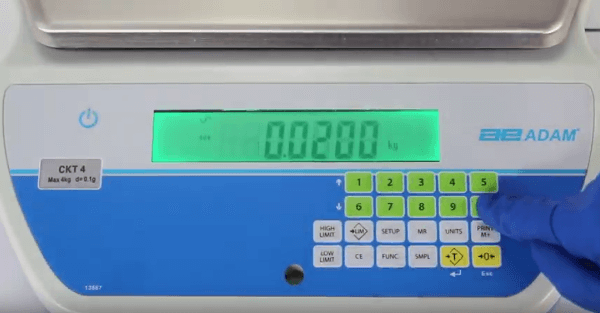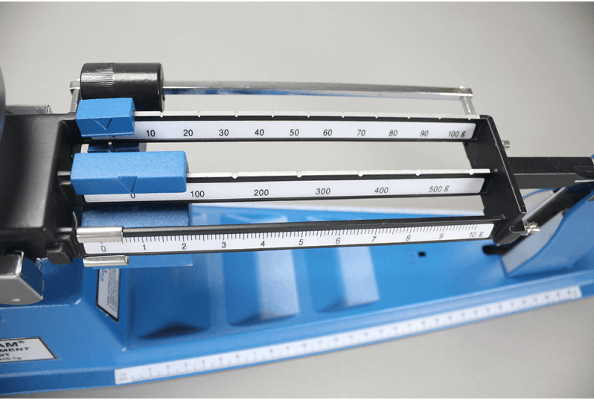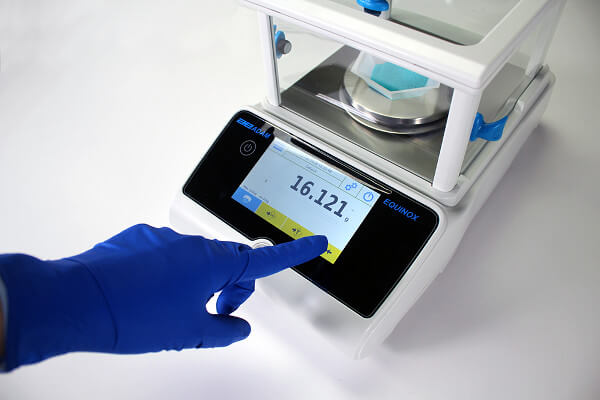
The tare feature is so useful and so important, it usually has a dedicated button on digital scales and balances. It’s as important in business settings as it is for home scales. In this blog post, we’ll explain what the tare feature is, how to use tare on different weighing devices, and why it’s so useful.
How the tare feature works
Pressing tare resets the balance’s display to zero. When you measure a compound, you don’t want to include the container’s weight in the reading. To tare the container, place it on the balance, wait for a stable reading, then press the tare key to reset the display to zero. Some scales, like the CKT, allow users to pre-program a tare, which can be very useful for repetitive weighing.

Mechanical VS digital scales
While digital scales usually have a tare button, mechanical scales work differently. The TBB 2610T triple beam balance has a tare bar that slides left or right to tare up to 225 grams. If you adjust zero or tare something’s weight, make sure to return the bar to its original position. And of course, once you’re done with that tare weight, adjust the scale back to zero.

On a digital scale or balance, all users need to do is press the tare key with the container or object that has to be tared on the weighing pan. For example, if you place a container that weighs 50g on the pan and press “Tare”, the balance will go from showing “50.00 g” to “0.00 g”. If you remove the container, the balance will read “- 50.00 g”. So, once you’re done with the tared object make sure to reset the balance back to zero, or the next measurements won’t be accurate.
Why the tare feature is important
Taring saves a lot of time and is used in every industry because so many things that need to be weighed are placed in a container or package. Even with raw materials that aren’t packaged yet, using a container to weigh things can help keep the scale clean. And in labs, containers are typically used to avoid cross contamination.
Another very common application is to use the tare feature to create compounds or batches in lab or production facilities. You can use the tare feature when you want to add ingredients together, but want the weight of each ingredient added. So for example, if you’re adding compounds together to follow a formula in a lab, you need to measure exactly how much of each ingredient is going into the mixture without having to weigh everything separately before mixing them. Some compounds can completely change the taste or toxicity of the final product, so it’s important to be precise.
In this case, you would place your first item on the pan and record the weight, then press the tare key. Continue putting each object and pressing the tare key for each item. When you remove all of the items from the pan, the balance will give you a negative figure, which would be the total weight of all the items that you have measured.
Taring is also very important when measuring very small quantities. Imagine if you were also charged for the weight of the container when you buy fresh meat! And on a larger scale, containers can weigh anywhere from a few kilos to a few tons. That’s a costly discrepancy!

Warning for overloads when using the tare feature
When using the tare function on a balance or scale, it’s important to remember that you are taking away from the full capacity of the scale. For example, if the capacity of the scale is 1000g and you tare a container that weighs 200g, then you have 800g left of weighing range before you would overload the scale. The container and the items weighed should not exceed the capacity of the scale.
We hope this was helpful in understanding the tare feature. Please don’t hesitate to contact us if you have any questions, and follow us on social media for Adam news and more blog posts.


